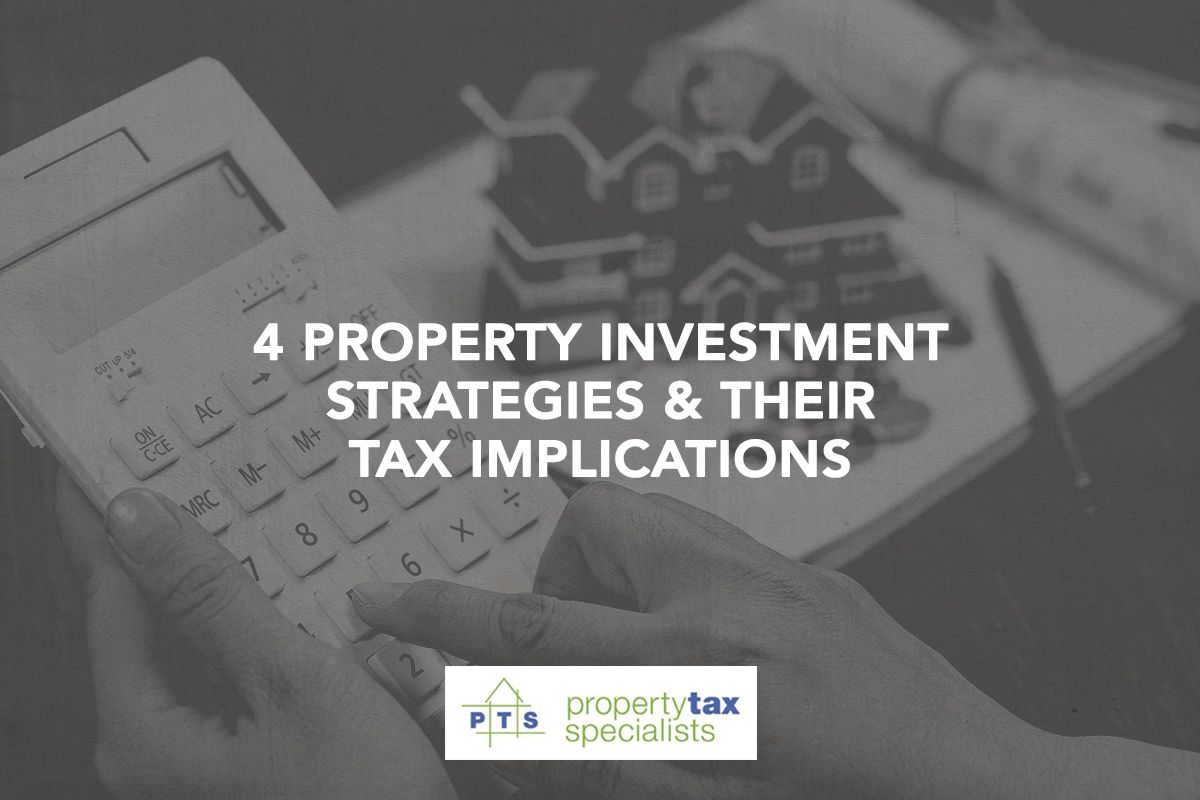4 Property Investment Strategies and Their Tax Implications
When it comes to property investment, investors have a variety of strategies at their disposal. Some may opt to buy a property with the intention of selling it for a profit, while others may choose to hold onto the property and rent it out.
Regardless of the chosen property investment strategy, each comes with its own unique tax implications. For example, selling a property shortly after purchase may result in a tax liability on the capital growth and gain, without access to any exemptions or concessions.
On the other hand, renting out a property requires the declaration of any rental income on tax returns, but also allows for various tax deductions.
 So it’s important for investors to be aware of the tax implications of their chosen property investment strategy because it can have a significant impact on their overall return.
So it’s important for investors to be aware of the tax implications of their chosen property investment strategy because it can have a significant impact on their overall return.
In this blog post, we’ll discuss some of the most common property investment strategies and how they’re taxed in Australia.
1. Buy and Hold For Capital Growth
With the buy-and-hold property investment strategy, investors purchase high-quality properties and retain them for an extended period, aiming to benefit from capital growth over time, which can significantly enhance the property’s value.
A major advantage (and one of the reasons why it’s a popular investment strategy) lies in the potential for passive income. Renting out the property can generate cash flow to help cover loan repayments, a scenario often referred to as positive gearing.
The buy-and-hold strategy also offers certain tax benefits. Investors can claim tax deductions on various property-related expenses, including depreciation, interest on the investment loan, and rental expenses. These deductions can effectively reduce taxable income, potentially leading to significant tax savings.
However, future sale of the property will likely incur Capital Gains Tax (CGT). CGT is the tax paid on the profit made from the sale of the investment property. Certain exemptions and concessions, such as the CGT discount for assets held for more than a year, can reduce the amount of CGT you owe.
In essence, the buy-and-hold strategy can offer both positive cash flow and growth potential. But understanding the tax implications, including CGT, is crucial to maximising returns and maintaining compliance with tax laws.
 2. Negative Gearing Investment Property Strategy
2. Negative Gearing Investment Property Strategy
Negative gearing is a strategy that comes into play when the loan interest and other expenses associated with an investment property exceed the rental income it generates.
Essentially, this means the investment runs at a loss each month. While this may seem counterintuitive, the strategy depends on the property’s value increasing over time, leading to a profit when sold.
One of the key benefits of negative gearing is its potential to reduce your taxable income. The current tax laws allow you to offset the loss from your investment property against your other forms of income.
Consequently, that loss effectively reduces your overall income for tax purposes, which can lead to significant tax savings.
If your primary goal is long-term capital growth rather than immediate rental income, you might consider using the negative gearing strategy in conjunction with the buy-and-hold investment strategy. In this scenario, the rent from the property can help cover most of the expenses, with you covering the rest.
However, when tax time rolls around, you can benefit from a reduced taxable income due to the losses incurred from the property.
3. Positive Gearing
Positive gearing is a scenario where the rental income from your investment property exceeds the loan interest and other associated expenses. In this situation, you’re generating a profit each month.
There are multiple uses for this additional income. You can use it to pay off debts or reinvest in other properties. Positive gearing can also enhance your borrowing power.
Seeing that you can comfortably cover the cost of the mortgage, lenders may be more willing to extend additional credit – which can be especially helpful when you’re looking to expand your property investment portfolio.
However, there’s a tax consideration to keep in mind. The rental income you receive is added to any other income you earn, such as wages or interest from savings account investments. As a result, you might end up in a higher tax bracket at the end of the year, resulting in a larger tax bill.
But it’s not all bad news on the tax front.
You can claim the tax deductions we discussed earlier in this blog post. These deductions can help offset some of your tax liabilities, enabling you to legally reduce your overall tax burden.
So, while positive gearing may increase your taxable income, strategic use of tax deductions can help manage the overall tax impact.
4. Subdividing an Investment Property
Subdivision is a strategy that involves purchasing a single piece of land and dividing it into two or more individual blocks. Taking this approach can open up a range of options for you.
For example, you might choose to sell each subdivided part of the land separately, maximising your profit potential. Alternatively, you could decide to retain one piece of the land and sell the other, balancing between immediate profit and long-term investment.
Another option is to keep both plots, using one to generate income (perhaps by building a rental property) and the other as your primary residence.
However, each of these options carries its own tax implications. For example, selling subdivided land could be considered a business or profit-making enterprise, which may have different tax consequences compared to the mere realisation of an asset.
Moreover, Goods and Services Tax (GST) considerations come into play when dealing with subdivisions. This includes assessing whether the margin scheme – a way of working out the GST you must pay when you sell property as part of your business – applies to your situation.
Subdivision is a complex strategy with many moving parts, and you must understand all the tax implications before proceeding. As always, consulting with a property tax specialist can provide valuable insights and help ensure you’re making the most tax-efficient decisions.
Key Takeaways
Investing in the property market involves a lot of considerations, with taxes being one of the most important—and often overlooked—aspects. Australian property investors need to be aware of the various tax implications associated with different types of investment properties and how to legally minimise their tax liability.
Knowing the tax implications of different investment strategies will allow you to make informed decisions about how to grow your portfolio.
If you need help selecting the right tax-effective investment strategy for your needs, please don’t hesitate to get in touch with one of our property tax specialists today.
Disclaimer
Please note that every effort has been made to ensure that the information provided in this guide is accurate. You should note, however, that the information is intended as a guide only, providing an overview of general information available to property buyers and investors. This guide is not intended to be an exhaustive source of information and should not be seen to constitute legal, tax or investment advice. You should, where necessary, seek your own advice for any legal, tax or investment issues raised in your affairs.



